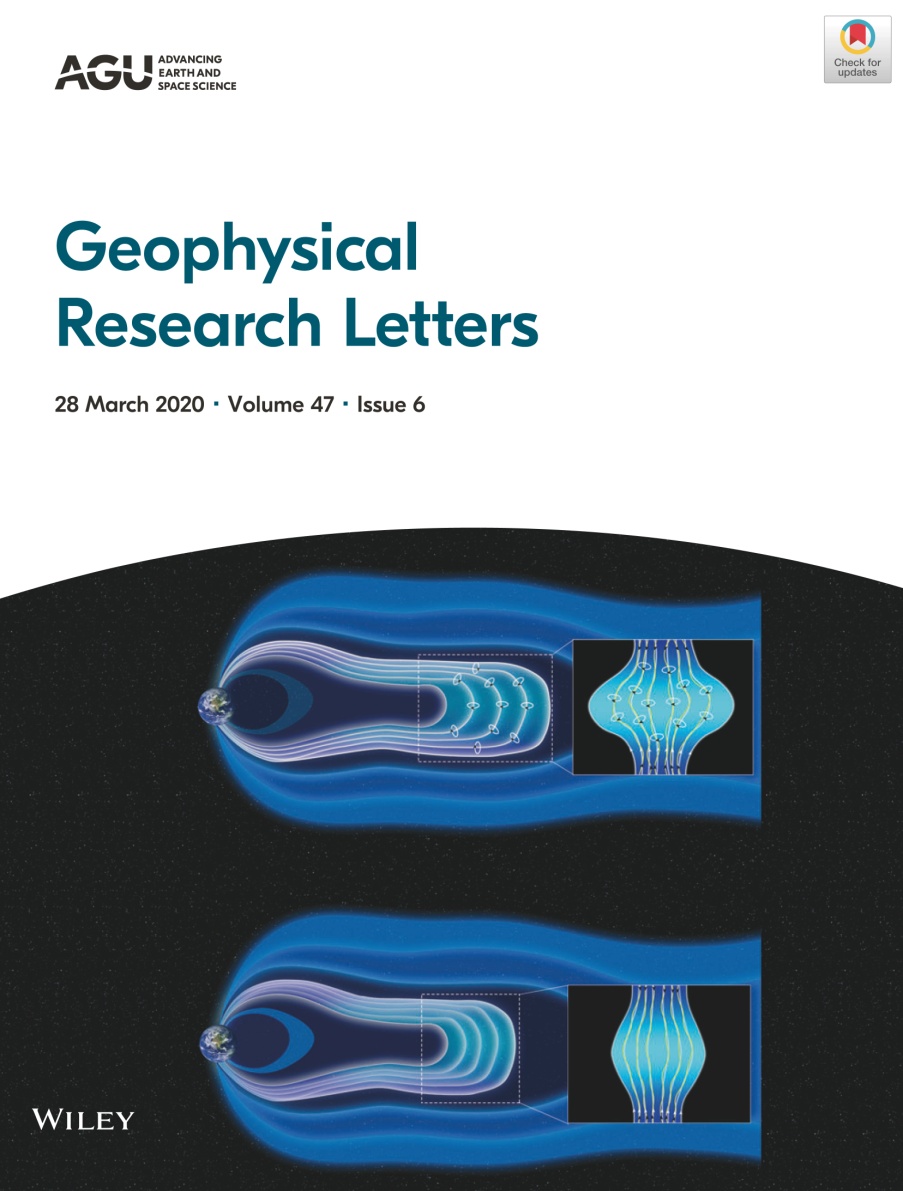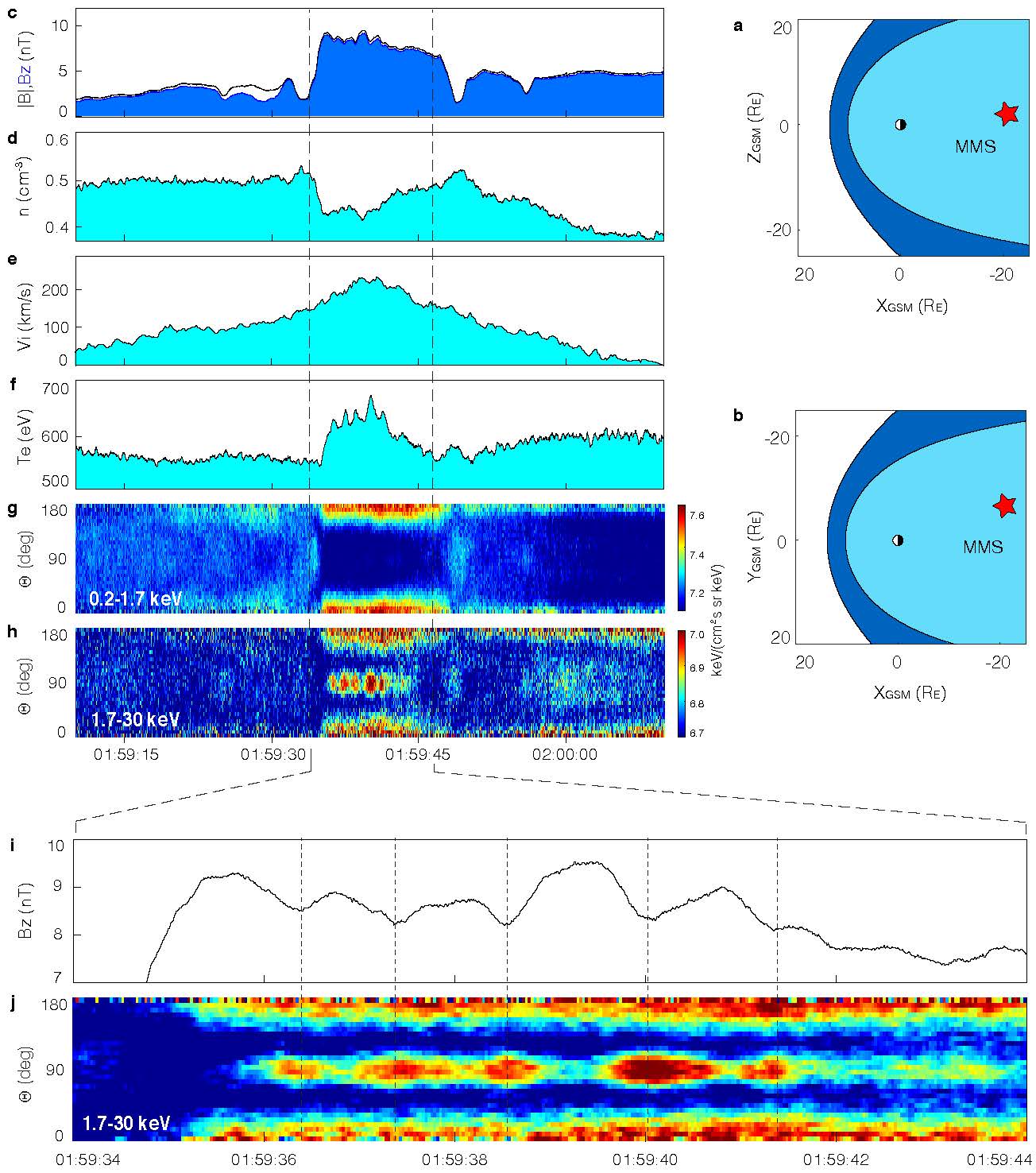Recently, Prof. Fu Huishan and his graduate students Zhao Mingjie, Yu Yue and Wang Zhe from the School of Space and Environment published their latest findings in Geophysical Research Letters, a famous journal in the field of space physics , with the title “A New Theory for Energetic Electron Generation Behind Dipolarization Front”, and it was selected as the cover paper of the current issue.

The cover of GRL journal
The research team has put forward a new theory for energetic electron generation behind the dipolarization front. This theory holds that there exists a magnetic bottle behind the dipolarization front, the neck of which remains steady, while the belly varies in accordance with time. When the belly expands, energetic electrons are trapped; when the belly contracts, energetic electrons are expelled. This theory poses a challenge to the classical theory of betatron mechanism, and can perfectly explain both the presence and absence of energetic electrons behind the dipolarization front.
Dipolarization front is a transient structure of the Earth's magnetic tail, which is characterized by the sharp enhancement of the north and south components of the magnetic field and the explosion of plasma current. A long-standing research problem in the field of dipolarization fronts is: Why in approximately 50% of the cases there exist energetic electrons behind dipolarization fronts, while in the other 50% circumstances there are no such electrons? Usually scientists would adopt theclassical theory of betatron and fermi acceleration. However, this theory can only explain the presence of energetic electrons behind the dipolarization front, but cannot illustrate their absence.
With the observation data collected by NASA's MMS satellite, Prof. Fu Huishan's research group cleverly resolved this problem. Behind the same front, they have found both the presence and absence of the energetic electrons. Moreover, they observed that the presence of high-energy electrons corresponds to the enhancement of magnetic field, while the absence of these electrons relates to the weakening of magnetic field (Fig. 1). The phenomenon contradicts with betatron mechanism, posing a challenge to the classical theory. Based on their observation, Prof. Fu Huishan noted that there exists a time-varying magnetic bottle behind the dipolarization front, when the belly expands or the magnetic field weakens, energetic electrons are trapped into the bottle; when the belly contracts or the magnetic field strengthens, energetic electrons are expelled from the magnetic bottle and disappear.
This theory can perfectly address the phenomenon of the presence and absence of energetic electrons. At the same time, the theory is also very interesting, under which the magnetic bottle resembles a food lover: with a big stomach, he can eat a lot of food; with a small stomach, he can just eat a little.

Fig.1 The presence and absence of energetic electrons behind the diolarization front
Geophysical Research Letters is a leading academic journal in the field of space physics. As a “Nature Index” journal, it was founded by the American Geophysical Union (AGU) in 1974. It mainly publishes the latest research achievements in space physics, solid geophysics, atmospheric science, climatology, oceanography, hydrology and surface, cryosphere and other fields.
This research work was supported by the National Natural Science Foundation of China.
More information of the article:
https://doi.org/10.1029/2019GL086790
Webpage of Prof. Fu Huishan's research group:
http://spart.buaa.edu.cn
Reported by Teng Xiong
Reviewed by Tang Li
Edited by Jia Aiping
Translated by Wen Peiyu

